Princeton University
 From Nwe
From Nwe 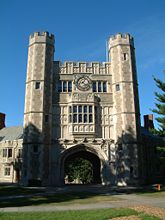
|
|
| Motto | Dei sub numine viget ("Under God's power she flourishes") |
|---|---|
| Established | 1746 |
| Type | Private |
| Location | Princeton Township, and West Windsor Township, New Jersey USA |
| Website | www.princeton.edu |
Princeton University is a private coeducational research university located in Princeton, New Jersey. It is one of eight universities that belong to the Ivy League. Originally founded at Elizabeth, New Jersey, in 1746 as the College of New Jersey, it relocated to Princeton in 1756 and was renamed “Princeton University” in 1896. Princeton was the fourth institution of higher education in the U.S. to conduct classes. Princeton originally had close ties to the Presbyterian Church, but today it is nonsectarian and makes no religious demands on its students.
The university has ties with the Institute for Advanced Study, Princeton Theological Seminary and the Westminster Choir College of Rider University. Both Princeton Theological Seminary and Westminster Choir College maintain cross-registration programs with Princeton. Princeton has traditionally focused on undergraduate education and academic research, though in recent decades it has increased its focus on graduate education and offers a large number of professional Master's degrees and Ph.D. programs in a range of subjects. Among many others, areas of research include anthropology, geophysics, entomology, and robotics, while the Forrestal Campus has special facilities for the study of plasma physics and meteorology.
Princeton maintains an emphasis on providing students with ample opportunity to explore and then deepen their academic interests. "Finding their passion" is a theme for Princeton students, a passion that later informs their choices of what to do after graduation. Princeton alumni and professors include many people of note—heads of state, academics, business figures, scientists, and others.
As a member of the Ivy League, a Princeton education has connotations of academic excellence. However, in the rapidly developing world of the twenty-first century, the Ivy League schools are challenged to retain such a reputation. This challenge goes to the very heart of the purpose of education. For Princeton to truly serve the nation and all nations through its outstanding undergraduate education and excellent research programs, attention must be paid not only to the mastery of knowledge and skills, but also understanding of the heart and spirit of humankind.
Mission and reputation
The history of Princeton University goes back to its establishment by "New Light" Presbyterians—Princeton was originally intended to train Presbyterian ministers. The announced purpose of the founders was to train men who would become "ornaments of the State as well as the Church." The charter was issued to a self-perpetuating board of trustees who were acting in behalf of the evangelical or New Light wing of the Presbyterian Church, but the College had no legal or constitutional identification with that denomination. Its doors were to be open to all students, "any different sentiments in religion notwithstanding." Compulsory chapel attendance was reduced from twice a day in 1882 and abolished in 1964.[1]
Today, Princeton is one of the most respected universities in the United States. It consistently ranks as the best undergraduate institution in the country and is seen as a leader in many fields including politics, philosophy, sociology, and economics. As President Shirley M. Tilghman noted in a Commencement address:
The specific components of a Princeton education have evolved over time, but our central aim has remained the same: to instill in each graduate those qualities of mind and character necessary for good citizenship and wise leadership. They include a broad intellectual curiosity that embraces open-mindedness coupled with critical thinking; respect for our moral and cultural inheritance coupled with a capacity for innovation and change; an appreciation of the shared destiny and common humanity of all peoples; and core principles of responsibility, integrity and courage.[2]
Through providing students with academic, extracurricular and other resources that help them achieve at the highest scholarly levels and prepare them for positions of leadership and lives of service in many fields of human endeavor, Princeton seeks to fulfill its informal motto: “Princeton in the Nation’s Service and in the Service of All Nations."[3]
History
Princeton opened at Elizabeth, New Jersey, under the presidency of Jonathan Dickinson as the College of New Jersey. (A proposal was made to name it for the colonial Governor, Jonathan Belcher, but he declined.) Its second president was Aaron Burr, Sr.; the third was Jonathan Edwards. In 1756, the college moved to Princeton, New Jersey.
Between the time of the move to Princeton in 1756 and the construction of Stanhope Hall in 1803, the college's sole building was Nassau Hall, named for William III of England of the House of Orange-Nassau. The college also obtained one of its colors, orange, from William III. During the American Revolution, Princeton was occupied by both sides, and the college's buildings were heavily damaged. During the summer of 1783, the Continental Congress met in Nassau Hall, making Princeton the country's capital for four months. The much-abused landmark survived bombardment with cannonballs in the Revolutionary War when General Washington struggled to wrest the building from British control, as well as later fires that left only its walls standing in 1802 and 1855.
Rebuilt by Joseph Henry Latrobe, John Notman, and John Witherspoon, the modern Nassau Hall has been much revised and expanded from the original designed by Robert Smith. Over the centuries, its role shifted from an all-purpose building, comprising office, dormitory, library, and classroom space, to classrooms only, to its present role as the administrative center of the university. Originally, the sculptures in front of the building were lions, as a gift in 1879. These were later replaced with tigers in 1911.[4]
Princeton Theological Seminary broke off from the college in 1812, since the Presbyterians wanted their ministers to have more theological training, while the faculty and students would have been content with less. This reduced the student body and the external support for Princeton for some time. The two institutions currently enjoy a close relationship based on common history and shared resources.
The university was becoming an obscure backwater when President James McCosh took office in 1868. He quickly made changes. For example, he reported to the trustees that he found the library "insufficiently supplied with books and open only once a week ... for one hour." To correct this, he hired a full-time librarian, Frederick Vinton who had worked at the Library of Congress, arranged to have the library open every day but Sunday, and built a new library building—the octagonal Chancellor Green Library.[5] During his two decades in power, McCosh overhauled the curriculum, oversaw an expansion of inquiry into the sciences, and supervised the addition of a number of buildings in the High Victorian Gothic style to the campus.[6] McCosh Hall is named in his honor.
In 1896, the college officially changed its name from the College of New Jersey to Princeton University to honor the town in which it resided. During this year, the college also underwent large expansion and officially became a university. Under Woodrow Wilson, Princeton introduced the preceptorial system in 1905, a then-unique concept that augmented the standard lecture method of teaching with a more personal form where small groups of students, or precepts, could interact with a single instructor, or preceptor, in their field of interest.
In 1969, Princeton University first admitted women as undergraduates. In 1887, the university had actually maintained and staffed a sister college in the town of Princeton on Evelyn and Nassau streets, called the Evelyn College for Women, which was closed after roughly a decade of operation. After abortive discussions in 1967 with Sarah Lawrence College to relocate the women's college to Princeton and merge it with the university, the administration decided to admit women and turned to the issue of transforming the school's operations and facilities into a female-friendly campus. The administration barely finished these plans by April 1969 when the admission's office began mailing out its acceptance letters. Its five-year coeducation plan provided $7.8 million for the development of new facilities that would eventually house and educate 650 women students at Princeton by 1974. Ultimately, 148 women, consisting of 100 freshwomen and transfer students of other years, entered Princeton on September 6, 1969 amidst much media attention. (Princeton enrolled its first female graduate student, Sabra Follett Meserve, as a Ph.D. candidate in Turkish history in 1961. A handful of women had studied at Princeton as undergraduates from 1963 on, spending their junior year there to study subjects in which Princeton's offerings surpassed those of their home institutions. They were considered regular students for their year on campus, but were not candidates for a Princeton degree.)
Facilities
Princeton's campus features buildings designed by noted architects such as Benjamin Latrobe, Ralph Adams Cram, McKim, Mead & White, Robert Venturi, and Nick Yeager. The campus, located on 2 km² of landscaped grounds, features a large number of Neo-gothic-style buildings, most dating from the late nineteenth and early twentieth centuries. It is situated about one hour from New York City and Philadelphia.
The first Princeton building constructed was Nassau Hall, situated in the north end of Campus on Nassau Street. Stanhope Hall (once a library, now administrative offices) and East and West College, both dormitories, followed. While many of the succeeding buildings—particularly the dormitories of the Northern campus—were built in a Collegiate Gothic style, the university is something of a mixture of American architectural movements. Greek Revival temples (Whig and Clio Halls) about the lawn south of Nassau Hall, while a crenellated theater (Murray-Dodge) guards the route west to the library. Modern buildings are confined to the east and south of the campus, a quarter overlooked by the 14-story Fine Hall. Fine, the Math Department's home, designed by Warner, Burns, Toan and Lunde and completed in 1970, is the tallest building at the university.[7] Contemporary additions feature a number of big-name architects, including IM Pei's Spelman Halls, Robert Venturi's Frist Campus Center, Rafael Vinoly's Carl Icahn Laboratory, and the Hillier Group's Bowen Hall. A residential college by Demetri Porphyrios and a science library by Frank Gehry are under construction.
Much sculpture adorns the campus, including pieces by Henry Moore (Oval with Points, also nicknamed "Nixon's Nose"), Clement Meadmore (Upstart II), and Alexander Calder (Five Disks: One Empty). At the base of campus is the Delaware and Raritan Canal, dating from 1830, and Lake Carnegie, a man-made lake donated by the steel magnate Andrew Carnegie, used for crew (rowing) and sailing.
Cannon Green
Cannon Green is located on the south end of the main lawn. Buried in the ground at the center is the "Big Cannon," the top of which protrudes from the earth and is traditionally spray-painted in orange with the current senior class year. A second "Little Cannon" is buried in the lawn in front of nearby Whig Hall. Both were buried in response to periodic thefts by Rutgers students. The "Big Cannon" is said to have been left in Princeton by Hessians after the Revolutionary War but moved to New Brunswick during the War of 1812. Ownership of the cannon was disputed and the cannon was eventually taken back to Princeton partly by a military company and then by 100 Princeton students. The "Big Cannon" was eventually buried in its current location behind Nassau Hall in 1840. In 1875, Rutgers students attempting to recover the original cannon stole the "Little Cannon" instead. The smaller cannon was subsequently recovered and buried as well. The protruding cannons are occasionally painted scarlet by Rutgers students who continue the traditional dispute.[8]
McCarter Theater
The Tony-award-winning[9] McCarter Theatre was built by the Princeton Triangle Club using club profits and a gift from Princeton University alumnus Thomas McCarter. Today the Triangle Club is an official student group and performs its annual freshmen revue and fall musicals in McCarter. The McCarter is also recognized as one of the leading regional theaters in the United States.
Art Museum
The Princeton University Art Museum was established to give students direct, intimate, and sustained access to original works of art to complement and enrich instruction and research at the university, and this continues to be its primary function.
Numbering nearly 60,000 objects, the collections range chronologically from ancient to contemporary art, and concentrate geographically on the Mediterranean regions, Western Europe, China, the United States, and Latin America. There is a collection of Greek and Roman antiquities, including ceramics, marbles, bronzes, and Roman mosaics from Princeton University’s excavations in Antioch. Medieval Europe is represented by sculpture, metalwork, and stained glass. The collection of Western European paintings includes examples from the early Renaissance through the nineteenth century, and there is a growing collection of twentieth-century and contemporary art.
Among the strengths in the museum are the collections of Chinese art, with important holdings in bronzes, tomb figurines, painting, and calligraphy; and pre-Columbian art, with examples of the art of the Maya. The museum has collections of old master prints and drawings and a comprehensive collection of original photographs. African art is represented as well as Northwest Coast Indian art. Other works include those of the John B. Putnam, Jr., Memorial Collection of twentieth-century sculpture, including works by such modern masters as Alexander Calder, Jacques Lipchitz, Henry Moore, and Pablo Picasso. The Putnam Collection is overseen by the Museum but exhibited outdoors around campus.
University Chapel
Princeton University Chapel is the third-largest university chapel in the world. Known for its gothic architecture, the chapel houses one of the largest and most precious stained glass collections in the country. Both the Opening Exercises for entering freshmen and the Baccalaureate Service for graduating seniors take place in the University Chapel. Construction on the Princeton University Chapel began in 1924 was completed in 1927, at a cost of $2.4 million. Princeton's Chapel is the world's third-largest university chapel, behind those of Valparaiso University and King's College, Cambridge, England.[10] It was designed by the University's lead consulting architect, Ralph Adams Cram, previously of Boston's architectural firm Cram, Goodhue and Ferguson, leading proponents of the Gothic revival style. The vaulting was built by the Guastavino Company, whose thin Spanish tile vaults can be found in Ellis Island, Grand Central Station, and hundreds of other significant works of twentieth-century architecture.
The 270-foot-long, 76-foot-high, cruciform church is in the collegiate Gothic style, and is made largely from Pennsylvania sandstone and Indiana limestone. It seats 2,000 people, many in pews made from wood salvaged from Civil War-era gun carriages. Seats in the chancery are made from oak from Sherwood Forest. The sixteenth century pulpit was brought from France and the primary pipe organ has 8,000 pipes and 109 stops.
One of the most prominent features of the chapel is its stained glass windows which have an unusually academic leaning. Three of the large windows have religious themes: the north aisle windows show the life of Jesus, the north clerestory shows the spiritual development of the Jews, while the south aisle has the teachings of Jesus. The stained glass in the south clerestory portrays the evolution of human thought from the Greeks to modern times. It has windows depicting Science, Law, Poetry, and War.
Organization
Princeton has six undergraduate residential colleges, each housing approximately 500 freshmen, sophomores, and a handful of junior and senior resident advisers. Each college consists of a set of dormitories, a dining hall, a variety of other amenities—such as study spaces, libraries, performance spaces, and darkrooms—and a collection of administrators and associated faculty. Two colleges, Wilson College and Forbes College (formerly Princeton Inn College), date to the 1970s; three others, Rockefeller, Mathey, and Butler Colleges, were created in 1983 following the Committee on Undergraduate Residential Life (CURL) report suggesting colleges as a solution to a perception of fragmented campus social life. The construction of Whitman College, the university's sixth, was completed in 2007.
University housing is guaranteed to all undergraduates for all four years, and more than 95 percent of students live on campus in dormitories. Freshmen and sophomores live in residential colleges. Juniors and seniors have the option to live off-campus, but high rent in the Princeton area encourages almost all students to live in dorms. Undergraduate social life revolves around the residential colleges and a number of coeducational "eating clubs," which students may choose to join at the end of their sophomore year, and which host a number of social events throughout the academic year.
Princeton has one graduate residential college, known simply as the Graduate College or G.C., located beyond Forbes College at the outskirts of campus. The far-flung location of the G.C. was the spoil of a squabble between Woodrow Wilson and then-Graduate School Dean Andrew Fleming West, which the latter won.[11] (Wilson preferred a central location for the College; West wanted the graduate students as far as possible from the campus.) The G.C. is composed of a large Collegiate Gothic section crowned by Cleveland Tower, a local landmark that also houses a world-class carillon. The attached New Graduate College houses more students. Its design departs from collegiate gothic, and is reminiscent of Butler College, the newest of the five pre-Whitman undergraduate colleges.
Academics
Princeton offers two main undergraduate degrees: the Bachelor of Arts (A.B.) and the Bachelor of Science in engineering (B.S.E.). Courses in the humanities are traditionally either seminars or semi-weekly lectures with an additional discussion seminar, called a "precept" (short for "preceptorial"). To graduate, all A.B. candidates must complete a senior thesis and one or two extensive pieces of independent research, known as "junior papers" or "J.P.s." They must also fulfill a two-semester foreign language requirement and distribution requirements with a total of 31 classes. B.S.E. candidates follow a parallel track with an emphasis on a rigorous science and math curriculum, a computer science requirement, and at least two semesters of independent research including an optional senior thesis. All B.S.E. students much complete at least 36 classes. A.B. candidates typically have more freedom in course selection than B.S.E. candidates because of the fewer number of required classes, though both enjoy a comparatively high degree of latitude in creating a self-structured curriculum.
Undergraduates at Princeton University agree to conform to an academic honesty policy called the Honor Code. Students write and sign the honor pledge, "I pledge my honor that I have not violated the Honor Code during this examination," on every in-class exam they take at Princeton. (The form of the pledge was changed slightly in 1980; it formerly read, "I pledge my honor that during this examination, I have neither given nor received assistance.") The Code carries a second obligation: upon matriculation, every student pledges to report any suspected cheating to the student-run Honor Committee. Because of this code, students take all tests unsupervised by faculty members. Violations of the Honor Code incur the strongest of disciplinary actions, including suspension and expulsion. Out-of-class exercises are outside the Honor Committee's jurisdiction. In these cases, students are often expected to sign a pledge on their papers that they have not plagiarized their work ("This paper represents my own work in accordance with University regulations."), and allegations of academic violations are heard by the University Committee on Discipline.
Princeton offers postgraduate research degrees in mathematics, physics, astronomy and plasma physics, economics, history, political science, philosophy, and English. Although Princeton offers professional graduate degrees in engineering, architecture, and finance, it has no medical school, law school, or business school like other research universities.[12] Its most famous professional school is the Woodrow Wilson School of Public and International Affairs (known as "Woody Woo" to students), founded in 1930 as the School of Public and International Affairs and renamed in 1948.
The university's library system houses over eleven million holdings[13] including seven million bound volumes.[14]
Student life and culture
Each residential college hosts social events and activities, guest speakers, and trips. The residential colleges are best known for their performing arts trips to New York City. Students sign up to take trips to see the ballet, the opera, and Broadway shows.
The eating clubs are co-ed organizations for upperclassmen located on the east end of campus. Most upperclassmen eat their meals at one of the ten eating clubs, whose houses also serve as evening and weekend social venues for members and guests.
Although the school's admissions policy is "need-blind" Princeton was ranked close to the bottom (based on the proportion of students receiving Pell Grants) in economic diversity among all national universities ranked by U.S. News & World Report.[15] While Pell figures are widely used as a gauge of the number of low-income undergraduates on a given campus, the rankings article cautions, "the proportion of students on Pell Grants isn't a perfect measure of an institution's efforts to achieve economic diversity."
The Princeton Review (unaffiliated with the university) declared Princeton the tenth strongest "jock school" in the nation. It has also consistently been ranked at the top of the TIME Magazine's Strongest College Sports Teams lists. Most recently, Princeton was ranked as a top ten school for athletics by Sports Illustrated. Princeton is best known for its men and women's crews, winning several NCAA and Eastern Sprints titles in recent years.
Traditions
- Arch Sings - Free late-night concerts in one of the larger arches on campus offered by one or several of Princeton's thirteen undergraduate a cappella groups. Most often held in Blair Arch or Class of 1879 Arch.
- Bonfire - ceremonial bonfire on Cannon Green behind Nassau Hall, held only if Princeton beats both Harvard and Yale at football in the same season; the most recent bonfire was lit November 17, 2006, after a 12-year drought.
- Cane Spree - an athletic competition between freshmen and sophomores held in the fall
- Class Jackets (Beer Jackets) - Each graduating class (and each class at its multiple-of-5 reunion thereafter—5th, 10th, etc.) designs a Class Jacket featuring their class year. The artwork is almost invariably dominated by the school colors and tiger motifs.
- Communiversity - an annual street fair with performances, arts and crafts, and other activities in an attempt to foster interaction between the university and residents of the Princeton community
- FitzRandolph Gate - at the end of Princeton's graduation ceremony, the new graduates process out through the main gate of the university as a symbol of their leaving college and entering the real world. According to tradition, anyone who leaves campus through FitzRandolph Gate before his or her own graduation date will not graduate (though entering through the gate is fine).
- Nude Olympics - annual (nude and partially nude) frolic in Holder Courtyard during the first snow of the winter. Started in the early 1970s, the Nude Olympics went co-ed in 1979 and gained much notoriety with the American press. For safety reasons, the administration banned the Olympics in 2000.
- P-rade - traditional parade of alumni and their families, who process by class year, during Reunions
- Reunions - annual gathering of alumni, held the weekend before graduation
- The Phantom of Fine Hall - a former tradition - before 1993, this was the legend of an obscure, shadowy figure that would infest Fine Hall (the Mathematics department's building) and write complex equations on blackboards. Although mentioned in Rebecca Goldstein's 1980s book The Mind-Body Problem about Princeton graduate student life, the legend self-deconstructed in the 1990s when the Phantom turned out to be in reality the inventor, in the 1950s, of the Nash equilibrium result in game theory, John Forbes Nash. The former Phantom, by then also haunting the computation center where courtesy of handlers in the math department he was a sacred monster with a guest account, shared the 1994 Nobel Prize in Economic Sciences and is now a recognized member of the University community.
Notable Alumni
Princeton includes many people of note in its list of alumni. These include heads of state, academics, business figures, scientists, and others. American presidents include John F. Kennedy, James Madison, and Woodrow Wilson. Other famous alumni include academic Cornell West, Queen Noor of Jordan, Aaron Burr, Senator Bill Bradley, Amazon.com founder Jeff Bezos, businessman Malcolm Forbes, eBay CEO Meg Whitman, Nobel laureate in economics Gary Becker, computer scientist Alan Turing, mathematician John Nash, and hockey player Hobey Baker.
Notes
- ↑ Office of Communications, Princeton in the American Revolution Princeton University. Retrieved November 23, 2011.
- ↑ Princeton Today Retrieved December 30, 2007.
- ↑ About Princeton: Overview Retrieved December 30, 2007.
- ↑ Princeton Companion. Princeton University. Retrieved November 11, 2007.
- ↑ Princeton University Library, The library's first home Library History. Retrieved November 23, 2011.
- ↑ Princeton Companion Princeton University. Retrieved November 11, 2007.
- ↑ Emporis: Fine Hall. Emporis. Retrieved November 11, 2007.
- ↑ Orange Key Virtual Tour - Princeton-Rutgers Cannon War. Princeton University. Retrieved November 11, 2007.
- ↑ Regional Theatre Award: 1994 Regional Theatre Award. Tony Awards. Retrieved November 11, 2007.
- ↑ History of the University Chapel and Architect Ralph Adams Cram. Princeton University. Retrieved November 11, 2007.
- ↑ Andrew Fleming West. Princeton University. Retrieved November 11, 2007.
- ↑ A short-lived Princeton Law School folded in 1852.
- ↑ Firestone Library. Princeton University. Retrieved November 23, 2011.
- ↑ Princeton Profile Princeton University. Retrieved November 23, 2011.
- ↑ U.S. News & World Report, Economic Diversity Among All National Universities Retrieved November 23, 2011.
References
ISBN links support NWE through referral fees
- Axtell, James. The Making of Princeton University: From Woodrow Wilson to the Present. Princeton, NJ: Princeton University Press, 2006. ISBN 0691126860
- Fraser, Allison. Princeton University 2007. College Prowler, 2006. ISBN 1427401136
- Nasar, Sylvia. A Beautiful Mind: The Life of Mathematical Genius and Nobel Laureate John Nash. Touchstone, 2001. ISBN 978-0743224574
- Oberdorfer, Don. Princeton University. Princeton, NJ: Princeton University Press, 1995. ISBN 0691011222
- Princeton University Press. A Century in Books: Princeton University Press 1905-2005. Princeton, NJ: Princeton University Press, 2005. ISBN 069112292X
- Rhineheart, Raymond. Princeton University. Princeton, NJ: Princeton Architectural Press, 2000. ISBN 1568982097
- Smith, Richard. Princeton University. Arcadia Publishing, 2005. ISBN 0738535672
Gallery
External links
All links retrieved November 30, 2022.
- Princeton University website
- Official Princeton athletics site
- The Daily Princetonian - Princeton's independent daily student newspaper
- Princeton Theological Seminary
| The Ivy League |
|---|
| Brown (Bears) • Columbia (Lions) • Cornell (Big Red) • Dartmouth (Big Green) • Harvard (Crimson) • Penn (Quakers) • Princeton (Tigers) • Yale (Bulldogs) |
| Association of American Universities | |
|---|---|
| Public |
Arizona • Buffalo (SUNY) • UC Berkeley • UC Davis • UC Irvine • UCLA • UC San Diego • UC Santa Barbara • Colorado • Florida • Illinois • Indiana • Iowa • Iowa State • Kansas • Maryland • Michigan • Michigan State • Minnesota • Missouri • Nebraska • North Carolina • Ohio State • Oregon • Penn State • Pittsburgh • Purdue • Rutgers • Stony Brook (SUNY) • Texas • Texas A&M • Virginia • Washington • Wisconsin |
| Private | |
| Canadian |
McGill • Toronto |
Credits
New World Encyclopedia writers and editors rewrote and completed the Wikipedia article in accordance with New World Encyclopedia standards. This article abides by terms of the Creative Commons CC-by-sa 3.0 License (CC-by-sa), which may be used and disseminated with proper attribution. Credit is due under the terms of this license that can reference both the New World Encyclopedia contributors and the selfless volunteer contributors of the Wikimedia Foundation. To cite this article click here for a list of acceptable citing formats.The history of earlier contributions by wikipedians is accessible to researchers here:
The history of this article since it was imported to New World Encyclopedia:
Note: Some restrictions may apply to use of individual images which are separately licensed.
↧ Download as ZWI file | Last modified: 02/03/2023 21:27:32 | 9 views
☰ Source: https://www.newworldencyclopedia.org/entry/Princeton_University | License: CC BY-SA 3.0
 ZWI signed:
ZWI signed: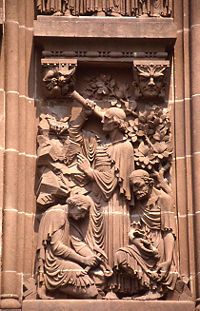
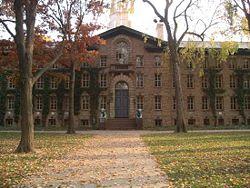
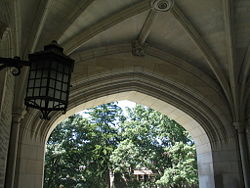
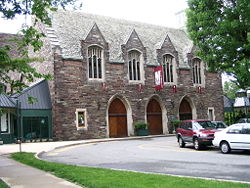
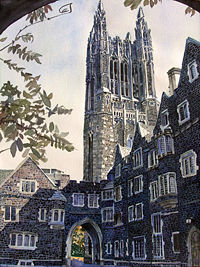
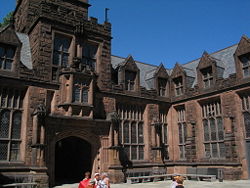
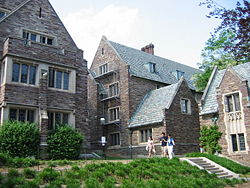

























 KSF
KSF